Research on the Preparation of Light Speckled Kidney Bean with High Resistance Starch by Autoclaving Processing
-
摘要: 为提高奶白花芸豆中抗性淀粉含量,保留其他营养成分,对压热法制备高抗性淀粉奶白花芸豆的工艺进行了研究,并评价了处理前后奶白花芸豆的基本营养成分、体外模拟消化的变化及其结构特征。结果表明,压热法制备高抗性淀粉奶白花芸豆的最佳工艺条件为:压热温度124 ℃,料液比1:1.9 (g:g),老化时间73 h,压热时间24 min,在此优化条件下抗性淀粉含量为35.63%;结构特性分析结果表明:淀粉原有颗粒形貌显著改变,分子晶型发生转变,但无新的基团产生。压热处理前后奶白花芸豆中粗脂肪、粗蛋白无显著性变化,淀粉及抗性淀粉含量显著(P<0.05)增加;处理后体外消化速率明显降低;压热处理提高奶白花芸豆中抗性淀粉含量的方法为其工业化生产及在食品中的应用提供了参考。Abstract: In order to improve the content of resistant starch of light speckled kidney bean and reserve the other nutrients, an autoclaved method for preparing light speckled kidney bean with high resistant starch was studied. The essential nutrients, in vitro digestibility and structural characteristics of autoclaving light speckled kidney bean were evaluated. Results showed that, the process conditions of autoclaved method for preparing light speckled kidney bean with high resistant starch were optimized as follows: Autoclaving temperature 124 ℃, solid-liquid ratio 1:1.9 (g:g), retrograded time 73 h, and autoclaving time 24 min. Under the optimized conditions, the content of resistant starch was 35.63%, which was close to the corresponding theoretical value. An analysis on the structural characteristics showed that the original starch grains was changed significantly in morphology and in molecular crystal form, but no new group was generated. After autoclaving, the crude fat, crude protein in the light speckled kidney bean did not obviously changing, but the content of starch and resistant starch increased obviously (P<0.05). The in vitro digestion rate of high resistant starch in the light speckled kidney bean decreased significantly after autoclaving. The method of autoclaving improve the content of resistant starch of light speckled kidney bean would provide a reference for the commercialization and its application in food industry as well.
-
抗性淀粉(Resistant Starch,RS)又称抗酶解淀粉,是在健康人体的胃和小肠中不能被酶解,在大肠中完成部分或全部发酵的一部分淀粉[1]。研究表明,RS可以影响葡萄糖的代谢,食用后可略微降低餐后葡萄糖浓度,显著降低餐后胰岛素浓度[2-3],同时还可以改变肠道内的微生物群,降低大肠和结肠的pH[4]、另外,高RS饮食可显著增加脂质氧化,减少体内脂肪堆积[5],改善胰岛素敏感性[6],降低糖尿病、心血管疾病和某些癌症的风险[7-8],可以作为新型的、具有保健功能的“食品添加剂”加入到食品中[9-11]。
芸豆(Phaseolus vulgaris L.)又名菜豆,蝶形花科菜豆属,品种主要有大白芸豆、花芸豆及红芸豆[12]等,在我国种植面积广泛[13]。芸豆中含有丰富的蛋白质、脂类和淀粉,其中直链淀粉含量较高,是制备抗性淀粉的优质原料[14-17]。近年来抗性淀粉的制备方法层出不穷,相比较化学方法和其他方法,物理法工艺简单,成本低且安全,更适合应用于食品领域,常用的物理法主要有压热法、超声法和微波法[18-19]。研究表明压热法是在较高的温度和压力下使淀粉颗粒结构被破坏,直链淀粉分子浸出,形成淀粉凝胶,从而促进抗性淀粉的形成[20]。与抗性淀粉制品相比较,如果能够既提高原料中抗性淀粉的含量,又保留其中蛋白、脂类等营养物质,开发出新型高抗性淀粉食品原料,是一种有益的探索[21]。
本试验以奶白花芸豆原豆为原料,探究压热法制备高抗性淀粉奶白花芸豆的工艺,旨在提高奶白花芸豆的营养作用,并为后续高抗性淀粉奶白花芸豆、芸豆粉的复配产品的工业化生产提供参考。
1. 材料与方法
1.1 材料与仪器
奶白花芸豆 吉林省白城市;3,5-二硝基水杨酸 上海迈科尔科学技术有限公司;S10027胃蛋白酶(30000 U/g)、S10005耐高温α-淀粉酶(20000 U/mL)、S10027糖化酶(100000 U/mL)、S31302猪胰腺α-淀粉酶(12 U/mg) 北京源叶生物科技有限公司;其他试剂均为分析纯;试验用水为蒸馏水。
S4800电子扫描显微镜 日本日立公司;Rigaku SmartLab SE X-射线衍射仪 日本理学公司;VECTOR33傅里叶变换红外光谱仪 德国Bruker公司;SQ810C立式压力蒸汽灭菌器 重庆雅马拓科技有限公司;723N可见分光光度计 上海仪电分析仪器有限公司制造;CTH1850R型离心机 湖南湘立科学仪器有限公司;SHA-C水浴恒温振荡器 常州荣华仪器制造有限公司;DGG-9140A电热恒温鼓风干燥箱 上海森信实验仪器有限公司。
1.2 实验方法
1.2.1 高抗性淀粉奶白花芸豆的制备工艺
采用不同的加热蒸煮条件对奶白花芸豆进行加热糊化处理。糊化结束后,自然冷却至室温,在4 ℃下老化不同的时间,最后在70 ℃下烘干24 h,得到高抗性淀粉奶白花芸豆。
1.2.2 单因素实验
1.2.2.1 压热时间对抗性淀粉含量的影响
称取15.0±0.5 g奶白花芸豆,按照1.2.1方法制备的高抗性淀粉奶白花芸豆,在压热温度120 ℃,料液比1:2.0(g:g),老化时间24 h的条件下,探究压热时间10、15、20、25和30 min时对抗性淀粉含量的影响。
1.2.2.2 压热温度对抗性淀粉含量的影响
称取15.0±0.5 g奶白花芸豆,按照1.2.1方法制备高抗性淀粉奶白花芸豆,在压热时间20 min,料液比1:2.0(g:g),老化时间24 h的条件下,探究压热温度110、115、120、125和130 ℃时对抗性淀粉含量的影响。
1.2.2.3 料液比对抗性淀粉含量的影响
称取15.0±0.5 g奶白花芸豆,按照1.2.1方法制备高抗性淀粉奶白花芸豆,在压热时间20 min,压热温度120 ℃,老化时间24 h的条件下,探究料液比1:1.5、1:2.0、1:2.5、1:3.0和1:3.5(g:g)时对抗性淀粉含量的影响。
1.2.2.4 老化时间对抗性淀粉含量的影响
称取15.0±0.5 g奶白花芸豆,按照1.2.1方法制备高抗性淀粉奶白花芸豆,在压热时间20 min,压热温度120 ℃,料液比1:2.0(g:g)的条件下,探究老化时间0、24、48、72和96 h时对抗性淀粉含量的影响。
1.2.3 响应面试验
在单因素实验的基础上,以压热温度(A)、料液比(B)、老化时间(C)和压热时间(D)为自变量,奶白花芸豆抗性淀粉含量(Y)为响应值,设置低(−1)、中(0)、高(1)三个水平进行响应面试验。应用Box-Behnken试验设计,通过Design-Expert 8.0.6.1软件确定最佳制备工艺,Box-Behnken试验设计因素与水平见表1。
表 1 Box-Behnken试验设计因素与水平Table 1. Factors and levels of Box-Behnken experiments design水平 A.压热温度(℃) B.料液比(g:g) C.老化时间(h) D.压热时间(min) −1 120 1:1.5 48 20 0 125 1:2.0 72 25 1 130 1:2.5 96 30 1.2.4 抗性淀粉含量测定
采用改进的AOAC 2002.02法测定制备前后奶白花芸豆中抗性淀粉含量[22]。
1.2.5 基本营养成分测定
水分测定参照GB 5009.3-2016《食品中水分的测定》[23];粗蛋白测定参照GB 5009.5-2016《食品中蛋白质的测定》[24];淀粉测定参照GB 5009.9-2016《食品中淀粉的测定》[25];粗脂肪测定参照GB 5009.6-2016《食品中脂肪的测定》[26]。
1.2.6 体外模拟消化测定
采用王宁[22]的方法稍作修改,测定制备前后奶白花芸豆中淀粉的体外模拟消化率称取样品2.0 g,加入40 mL蒸馏水,沸水浴糊化30 min,取出冷却至室温后,加入氯化钾-盐酸缓冲溶液(20 mL,pH1.5)和胃蛋白酶(1 mL,3000 U/mL)于37 ℃水浴中震荡30 min。将pH调至中性,加入乙酸钠缓冲溶液(20 mL,pH5.2)和5 mL混酶(4 mL猪胰腺α-淀粉酶1000 U/mL,1 mL淀粉葡萄糖苷酶2500 U/mL),置于37℃水浴震荡中,分别于0、20、40、60、90、120、150、180、240 min时吸取1 mL上清液于试管中,加乙醇灭活,用DNS法测定其还原糖含量。
$$ 水解率\left(\text{%}\right)=\frac{{{\rm{G}}}_{\mathrm{t}}\times 0.9}{{\rm{m}}}\times 100 $$ 式中:${{\rm{G}}}_{\mathrm{t}}$为不同时间水解后葡萄糖的质量,mg;m为样品总淀粉质量,mg。
1.2.7 奶白花芸豆的淀粉提取工艺
将经压热法处理或未经处理的奶白花芸豆粉碎,过80目筛,按照料液比1:3加入蒸馏水搅拌均匀提取30 min,所得溶液用蒸馏水洗涤过滤数次直至淀粉内无杂质后4000 r/min离心5 min,除去上清液,将得到的淀粉转移至平皿中,放入60 ℃烘箱烘干24 h[27]。
1.2.8 淀粉结构特性分析
1.2.8.1 电子扫描显微镜观察
将两种淀粉样品均匀涂抹在样品台上,进行喷金处理,通过SEM观察颗粒形貌。扫描条件:加速电压2.0 kV;放大1000、2000倍[28]。
1.2.8.2 结晶结构测定
取两种淀粉样品在25 ℃和相对湿度100%的条件下平衡24 h,进行XRD检测。衍射条件;电压40 kV;电流44 mA;扫描范围5°~80°;扫描速率4°/min。使用MDI Jade 6软件计算淀粉的相对结晶度[29]。
1.2.8.3 红外光谱分析
采用溴化钾压片法,在波数400~4000 cm−1,分辨率4 cm−1条件下对两种淀粉进行红外光谱分析。
1.3 数据处理
从所购奶白花芸豆样品中抽取5个样本,每个样本做3次平行试验,结果用平均值±标准差表示。利用SPSS 21.0、Excel 2016统计软件和Design-Expert 8.0.6.1软件对试验数据进行统计处理,采用Origin 2019作图。
2. 结果与分析
2.1 高抗性淀粉奶白花芸豆的制备的单因素试验
2.1.1 压热时间对抗性淀粉含量的影响
由图1可知,压热时间在10~30 min内,抗性淀粉含量随压热时间的延长呈先上升后下降的趋势,在压热时间为25 min时,抗性淀粉含量达到最大值26.16%±0.17%。当压热时间较短时奶白花芸豆淀粉未完全糊化,直链淀粉不能从淀粉中充分游离[30],导致抗性淀粉含量较低,而当压热时间过长时则会导致淀粉分子降解过度,形成相对分子质量较小、运动速度过快且不易聚集的直链淀粉分子和糊精[31],影响抗性淀粉的形成。根据试验结果考虑,压热时间宜选择为25 min。
2.1.2 压热温度对抗性淀粉含量的影响
由图2可知,压热温度在110~130 ℃内,抗性淀粉含量随压热温度的升高呈先上升后下降的趋势,这与韩丽瑶等[32]的研究结果一致在压热温度为125 ℃时,抗性淀粉含量达到最大值25.70%±0.05%。这主要是由于压热温度较低时,淀粉分子未完全糊化,从而影响抗性淀粉含量。当压热温度逐渐升高时,淀粉分子的膨胀度和溶解度随之增加,有利于直链淀粉从淀粉分子中分离形成晶核,使抗性淀粉含量呈上升趋势[33],但当压热温度过高时,淀粉分子发生过度糊化,分子间氢键断裂、范德华力减弱,导致抗性淀粉含量降低[34]。根据试验结果考虑,压热温度宜选择为125 ℃。
2.1.3 料液比对抗性淀粉含量的影响
由图3可知,随料液比减小,抗性淀粉含量呈先上升后下降的趋势,在料液比为1:2.0(g:g)时,抗性淀粉含量达到最大值26.71%±0.05%。当料液比大于1:2.0(g:g)时,体系内固形物含量过多,淀粉颗粒不能充分吸水,从而导致淀粉分子间氢键不能被完全破坏,因此不易溶出直链淀粉形成双螺旋结构和重结晶,导致抗性淀粉含量偏低;当料液比小于1:2.0(g:g)时,体系内液体含量增多,溶出的直链淀粉之间不能相互靠近,难以形成分子间氢键,阻碍了分子重排的过程,因此当料液比越小时,抗性淀粉含量越低[35]。根据试验结果考虑,料液比选择1:2.0(g:g)为宜。
2.1.4 老化时间对抗性淀粉含量的影响
由图4可知,老化时间小于72 h时,随老化时间的增加抗性淀粉含量呈上升趋势,72 h时抗性淀粉含量最大为27.65%±0.11%。因为淀粉的老化是指糊化后的淀粉分子由无序状态重新进行有序排列的过程[36],这个过程可分为短期和长期,其中由直链淀粉通过氢键连接重组形成结构致密的双螺旋结构的过程称为短期老化,糊化后较短时间内即可完成;由支链淀粉外侧短链的重结晶所引起的老化为长期老化,糊化后需要较长时间才能完成[37]。当超过72 h后奶白花芸豆抗性淀粉含量极速下降,可能是由于没有加入防腐剂,淀粉分子发生严重腐败,导致抗性淀粉得率降低。根据试验结果考虑,老化时间宜选择为72 h。
2.2 高抗性淀粉奶白花芸豆的制备的响应面试验
2.2.1 Box-Behnken响应面试验
按照Box-Behnken试验设计的统计学要求,根据试验因素和水平的要求,设计29次实验,实验结果如表2。
表 2 Box-Behnken试验设计及结果Table 2. Box-Behnken experimental design and corresponding results实验号 A.压热温度 B.料液比 C.老化时间 D.压热时间 Y抗性淀粉含量(%) 1 0 −1 0 −1 32.88 2 −1 −1 0 0 30.55 3 1 0 −1 0 30.33 4 −1 0 1 0 30.68 5 0 0 0 0 35.81 6 1 1 0 0 27.37 7 1 0 1 0 26.96 8 0 0 −1 −1 29.86 9 0 −1 0 1 31.75 10 0 1 0 −1 32.69 11 0 0 0 0 36.27 12 0 0 −1 −1 29.71 13 0 −1 −1 0 28.15 14 −1 0 −1 0 27.15 15 0 1 0 0 29.21 16 −1 1 0 0 30.96 17 1 0 −1 −1 28.49 18 0 0 1 1 27.61 19 0 1 0 0 26.91 20 0 1 1 1 29.15 21 0 0 1 1 29.11 22 0 −1 0 0 30.92 23 0 0 0 0 36.51 24 0 0 0 0 35.42 25 1 0 0 1 28.19 26 0 0 0 0 35.35 27 1 −1 0 0 32.87 28 −1 0 0 1 31.22 29 −1 0 0 −1 30.69 2.2.2 建立模型方程与方差分析
对表2中的数据进行回归分析,得到多项回归方程:抗性淀粉含量Y=35.87−0.59A−0.90B+0.17C−0.61D−1.48AB−1.72AC−0.21AD−1.27BC−0.60BD+0.41CD−3.23A2−2.24B2−4.34C2−2.49D2
利用Design-Expert8.0.6.1软件分析表2中数据,得到方差分析及回归方程显著性检验结果见表3。
表 3 回归方程系数显著性检验表Table 3. Test of significance for regression equation coefficients方差来源 平方和 自由度 均方 F值 P值 显著性 模型 225.63 14 16.12 18.59 <0.0001 ** A 4.13 1 4.13 4.76 0.0466 * B 9.77 1 9.77 11.28 0.0047 ** C 0.33 1 0.33 0.38 0.5491 D 4.43 1 4.43 5.11 0.0406 * AB 8.73 1 8.73 10.07 0.0068 ** AC 11.90 1 11.90 13.73 0.0024 ** AD 0.17 1 0.17 0.20 0.6626 BC 6.43 1 6.43 7.41 0.0165 * BD 1.45 1 1.45 1.68 0.2165 CD 0.68 1 0.68 0.79 0.3905 A2 67.63 1 67.63 78.02 <0.0001 ** B2 32.41 1 32.41 37.38 <0.0001 ** C2 121.98 1 121.98 140.7 <0.0001 ** D2 40.30 1 40.30 46.49 <0.0001 残差 12.14 14 0.87 失拟项 11.09 10 1.11 4.24 0.0882 纯误差 1.05 4 0.26 总和 237.77 28 注:*表示差异显著P<0.05;**表示差异极显著P<0.01。 由表3可看出,整体模型差异极显著(P<0.0001<0.01),失拟项差异不显著(P=0.0882>0.05),因此二次模型成立。由方差分析得知R2=0.9490,说明二次模型与实际情况具有较好的拟合度,能够反映响应值的变化,可用来对高抗性淀粉奶白花芸豆的压热法制备工艺进行分析和预测。
分析表3的P值可知,在所取因素水平范围内,各因素对抗性淀粉含量的影响依次为:料液比>压热时间>压热温度>老化时间。该模型中一次项B对响应值的影响极显著(P<0.01),A、D对响应值的影响显著(P<0.05);二次项A2、B2、C2、D2对响应值的影响均极显著(P<0.01);交互项AB、AC对响应值的影响极显著(P<0.01),BC对响应值的影响显著(P<0.05)。
2.2.3 奶白花芸豆抗性淀粉含量响应面分析
图5~图7是通过响应面分析料液比、压热温度和老化时间对奶白花芸豆抗性淀粉含量影响的等高线与响应曲面图。
由图5a可知,等高线图呈现椭圆形,表明压热温度与料液比的交互作用对响应值影响显著。图5b可以看出,随着料液比的减小,响应曲面有明显变化,响应值先升高后降低,表明料液比对抗性淀粉含量影响较大,料液比在1:1.9~1:2.3(g:g)之间,抗性淀粉含量较高。
由图6a可知,等高线图呈现椭圆形,表明压热温度与老化时间交互作用显著。图6b可知随着压热温度的增加,响应曲面有明显变化,响应值先升高后降低,表明压热温度对抗性淀粉含量影响较大,压热温度在122~126 ℃之间,抗性淀粉含量较高。
由图7a可知,等高线图呈现椭圆形,表明料液比与老化时间交互作用显著。图7b可以看出随着老化时间的延长,响应曲面有明显变化,表明老化时间对抗性淀粉含量影响较大,老化时间在72~80 h之间,抗性淀粉含量最高。
2.2.4 最优工艺条件的确定及验证
通过回归模型的预测,压热法制备高抗性淀粉奶白花芸豆的最佳理论条件为压热温度124.7 ℃,料液比1:1.9(g:g),老化时间73.29 h,压热时间24.53 min,此条件下预测抗性淀粉得率为36.00%。结合实际情况将最优工艺条件修改为压热温度124 ℃,料液比1:1.9(g:g),老化时间73 h,压热时间24 min,在此条件下进行3次平行试验,实际测得抗性淀粉平均得率为35.63%,与理论值偏差0.37%,由此可见使用响应面法优化高抗性淀粉奶白花芸豆的压热法制备工艺条件准确可靠,有实际应用价值。
2.3 高抗性淀粉奶白花芸豆的基本营养成分
由表4可以看出,奶白花芸豆含有丰富的淀粉、蛋白质及脂肪,其中抗性淀粉约占总淀粉的1/2左右。与原豆相比经压热、老化处理后的高抗性淀粉奶白花芸豆水分含量显著性(P<0.05)减小,粗淀粉及抗性淀粉含量显著性(P<0.05)增加,粗脂肪和粗蛋白含量无显著性变化。这可能是由于在高压蒸煮过程中芸豆籽粒中自由水含量减少;脂肪与淀粉复合形成具有V型结构的淀粉-脂质复合物即RS5型抗性淀粉[38],使得粗脂肪含量小幅降低;粗淀粉含量显著(P<0.05)增加可能是由于奶白花芸豆经压热处理后少量非淀粉多糖发生水解;糊化淀粉在老化过程中,部分直链淀粉发生了不可逆的重结晶,支链淀粉发生了完全可逆的重结晶,导致抗性淀粉含量显著(P<0.05)升高[39]。制备前后奶白花芸豆中各项基本营养成分都未大幅度的增加或减少而抗性淀粉含量显著(P<0.05)增加,表明压热法制备高抗性淀粉奶白花芸豆既能最大程度的保留芸豆中原有的营养物质,又增加了抗性淀粉含量。
表 4 高抗性淀粉奶白花芸豆基本营养成分分析结果Table 4. Analysis results of basic nutritional composition of light speckled kidney bean with high resistance starch样品 水分(%) 粗蛋白(%) 粗脂肪(%) 淀粉(%) 抗性淀粉(%) 原豆 8.16±0.14a 24.15±0.35a 9.48±0.36a 47.25±0.66a 24.06±0.57b RS芸豆 6.34±0.30b 23.85±0.15a 8.99±0.29a 49.40±0.85b 36.40±0.65a 注:同列上标字母不同者表示差异显著,P<0.05;水分以鲜重计算,粗蛋白、粗脂肪、淀粉及抗性淀粉均以干重计算。 2.4 体外模拟消化实验结果
由图8可知,随着体外消化时间的延长,两种奶白花芸豆中淀粉的水解率均不断增加,但高抗性淀粉奶白花芸豆在120 min后逐渐趋于平缓。在前20 min内,淀粉分子在胰酶以及糖化酶的作用下分解为小分子还原糖,消化率迅速增加;随着消化时间的延长,淀粉分子不断被水解,与酶结合的位点减少[40],反应速率减慢,产物的生成速率减慢,但整个系统的产物量仍在增加。在相同的消化时间里,奶白花芸豆中淀粉的消化速率大于高抗性淀粉奶白花芸豆中淀粉的体外消化速率,表明高抗性淀粉奶白花芸豆可以使机体血糖值升高较慢。
2.5 淀粉结构特性分析
2.5.1 扫描电镜分析
如图9(a)~图9(b)所示,奶白花芸豆中淀粉颗粒呈肾形或椭球形,表面完整、光滑、饱满。图9(c)~图9(d)表明,经压热处理的高抗性淀粉奶白花芸豆中淀粉颗粒呈不规则且棱角分明的无定形团块状结构,表面粗糙且存在孔状凹陷,横断面呈片层状结构,淀粉颗粒完整性丧失,这可能是由于高温高压处理后,淀粉颗粒发生了糊化现象,颗粒结构遭到严重破坏,支链淀粉分子分解,在老化一段时间后,重组为了直链淀粉,表面形成了孔状,且形状不规则[41]。
2.5.2 晶体结构分析
如图10所示奶白花芸豆中淀粉的X-射线衍射图谱的2θ在15°,17°,23°附近出现较强的衍射峰,表明奶白花芸豆中淀粉的典型结晶结构为A型,这与黄智慧等[41]报道的结果一致。与奶白花芸豆中淀粉相比,高抗性淀粉奶白花芸豆中淀粉的X-射线衍射图谱的2θ在13°,22°,23°时出现新的强衍射峰,表明经过压热处理后出现了更稳定的B型、C型和V型结晶结构,这可能是由于糊化,老化过程破坏了淀粉结晶区双螺旋结构,通过重组趋于形成更稳定的晶体结构[42]。
![]() 图 10 奶白花芸豆和高抗性淀粉奶白花芸豆淀粉的X-射线衍射图谱注:1.高抗性淀粉奶白花芸豆淀粉;2.奶白花芸豆淀粉;图11同。Figure 10. X-ray diffraction spectra of starch of light speckled kidney bean starch and light speckled kidney bean with high resistance starch
图 10 奶白花芸豆和高抗性淀粉奶白花芸豆淀粉的X-射线衍射图谱注:1.高抗性淀粉奶白花芸豆淀粉;2.奶白花芸豆淀粉;图11同。Figure 10. X-ray diffraction spectra of starch of light speckled kidney bean starch and light speckled kidney bean with high resistance starch2.5.3 红外光谱分析
如图11所示高抗性淀粉奶白花芸豆中淀粉与奶白花芸豆中淀粉分别在3431.23、3429.52 cm−1处出现特征吸收峰,对应O-H伸缩振动峰,2929.36、2927.22 cm−1处对应C-H伸缩振动峰,1648.87、1639.58 cm−1处对应C=O伸缩振动峰,指纹区在1021.76、974.24 cm−1处出现吸收峰,对应C-O伸缩振动峰[43]。奶白花芸豆中淀粉与高抗性淀粉奶白花芸豆中淀粉的红外图谱没有显著差异,主要特征吸收峰均相似,表明经过压热处理的高抗性淀粉奶白花芸豆中淀粉没有形成新的基团,但各化学键吸收峰强度均有所增加,说明高抗性淀粉奶白花芸豆中淀粉分子间氢键作用增强[44]。
3. 结论
采用压热法制备高抗性淀粉奶白花芸豆时,料液比对抗性淀粉含量的影响极显著,压热温度与压热时间对抗性淀粉含量的影响显著,影响因素主次顺序为:料液比>压热时间>压热温度>老化时间;通过Box-Behnken试验设计,运用响应面分析结果结合实际值,确定了最佳工艺条件为:压热温度124 ℃,料液比1:1.9(g:g),老化时间73 h,压热时间24 min。在此优化条件下抗性淀粉含量为35.63%,与理论模型预测值36.00%接近。压热处理前后奶白花芸豆基本营养成分及体外模拟消化率的变化进行分析,表明经压热、老化处理后,奶白花芸豆中淀粉的体外模拟消化率明显降低,但最大程度的保留了基本营养成分。另外,对压热前后奶白花芸豆淀粉的结构特性进行分析,发现与奶白花芸豆淀粉相比,高抗性淀粉奶白花芸豆淀粉的颗粒形貌明显改变,由光滑、饱满球形或椭球形变成了表面粗糙且棱角分明的无定形团块状结构,产生了更稳定的B型、C型和V型结晶结构,没有形成新的基团,但分子间氢键作用有所增强。本研究提高了奶白花芸豆的抗性淀粉含量,高抗性淀粉芸豆与大米复配制作中低GI杂豆饭、杂豆粥,或与小麦粉复配制作中低GI饼干、面包等面制品等提供一定理论基础,这对于淀粉类杂豆的深加工具有一定的参考价值。
-
图 10 奶白花芸豆和高抗性淀粉奶白花芸豆淀粉的X-射线衍射图谱
注:1.高抗性淀粉奶白花芸豆淀粉;2.奶白花芸豆淀粉;图11同。
Figure 10. X-ray diffraction spectra of starch of light speckled kidney bean starch and light speckled kidney bean with high resistance starch
表 1 Box-Behnken试验设计因素与水平
Table 1 Factors and levels of Box-Behnken experiments design
水平 A.压热温度(℃) B.料液比(g:g) C.老化时间(h) D.压热时间(min) −1 120 1:1.5 48 20 0 125 1:2.0 72 25 1 130 1:2.5 96 30 表 2 Box-Behnken试验设计及结果
Table 2 Box-Behnken experimental design and corresponding results
实验号 A.压热温度 B.料液比 C.老化时间 D.压热时间 Y抗性淀粉含量(%) 1 0 −1 0 −1 32.88 2 −1 −1 0 0 30.55 3 1 0 −1 0 30.33 4 −1 0 1 0 30.68 5 0 0 0 0 35.81 6 1 1 0 0 27.37 7 1 0 1 0 26.96 8 0 0 −1 −1 29.86 9 0 −1 0 1 31.75 10 0 1 0 −1 32.69 11 0 0 0 0 36.27 12 0 0 −1 −1 29.71 13 0 −1 −1 0 28.15 14 −1 0 −1 0 27.15 15 0 1 0 0 29.21 16 −1 1 0 0 30.96 17 1 0 −1 −1 28.49 18 0 0 1 1 27.61 19 0 1 0 0 26.91 20 0 1 1 1 29.15 21 0 0 1 1 29.11 22 0 −1 0 0 30.92 23 0 0 0 0 36.51 24 0 0 0 0 35.42 25 1 0 0 1 28.19 26 0 0 0 0 35.35 27 1 −1 0 0 32.87 28 −1 0 0 1 31.22 29 −1 0 0 −1 30.69 表 3 回归方程系数显著性检验表
Table 3 Test of significance for regression equation coefficients
方差来源 平方和 自由度 均方 F值 P值 显著性 模型 225.63 14 16.12 18.59 <0.0001 ** A 4.13 1 4.13 4.76 0.0466 * B 9.77 1 9.77 11.28 0.0047 ** C 0.33 1 0.33 0.38 0.5491 D 4.43 1 4.43 5.11 0.0406 * AB 8.73 1 8.73 10.07 0.0068 ** AC 11.90 1 11.90 13.73 0.0024 ** AD 0.17 1 0.17 0.20 0.6626 BC 6.43 1 6.43 7.41 0.0165 * BD 1.45 1 1.45 1.68 0.2165 CD 0.68 1 0.68 0.79 0.3905 A2 67.63 1 67.63 78.02 <0.0001 ** B2 32.41 1 32.41 37.38 <0.0001 ** C2 121.98 1 121.98 140.7 <0.0001 ** D2 40.30 1 40.30 46.49 <0.0001 残差 12.14 14 0.87 失拟项 11.09 10 1.11 4.24 0.0882 纯误差 1.05 4 0.26 总和 237.77 28 注:*表示差异显著P<0.05;**表示差异极显著P<0.01。 表 4 高抗性淀粉奶白花芸豆基本营养成分分析结果
Table 4 Analysis results of basic nutritional composition of light speckled kidney bean with high resistance starch
样品 水分(%) 粗蛋白(%) 粗脂肪(%) 淀粉(%) 抗性淀粉(%) 原豆 8.16±0.14a 24.15±0.35a 9.48±0.36a 47.25±0.66a 24.06±0.57b RS芸豆 6.34±0.30b 23.85±0.15a 8.99±0.29a 49.40±0.85b 36.40±0.65a 注:同列上标字母不同者表示差异显著,P<0.05;水分以鲜重计算,粗蛋白、粗脂肪、淀粉及抗性淀粉均以干重计算。 -
[1] MCCLEARY B V, MONAGHAN D A. Measurement of resistant starch[J]. Journal of AOAC International,2002(3):665−675.
[2] KIM Y J, KIM J G, LEE W K, et al. Trial data of the anti-obesity potential of a high resistant starch diet for canines using Dodamssal rice and the identification of discriminating markers in feces for metabolic profiling[J]. Metabolomics,2019,15(2):1−11.
[3] MANUEL GÓMEZ, OLIETE B, ROSELL C M, et al. Studies on cake quality made of wheat-chickpea flour blends[J]. Food Science and Technology,2008,41(9):1701−1709.
[4] HIGGINS J A. Resistant starch and energy balance: Impact on weight loss and maintenance[J]. Critical Reviews in Food Science and Nutrition,2014,54(9):1158−1166. doi: 10.1080/10408398.2011.629352
[5] HIGGINS J A, HIGBEE D R, DONAHOO W T, et al. Resistant starch consumption promotes lipid oxidation[J]. Nutrition and Metabolism,2004,1(1):1−11.
[6] 王怡, 陈祖琴, 李萍, 等. 抗性淀粉的制备、生理功能及应用[J]. 食品工业科技,2017,38(2):396−400. [WANG Y, CHEN Z Q, LI P, et al. Preparation and physiological function of resistant starch and its application[J]. Science and Technology of Food Industry,2017,38(2):396−400. WANG Y, CHEN Z Q, LI P, et al. Preparation and physiological function of resistant starch and its application[J]. Science and Technology of Food Industry, 2017, 38(2): 396-400.
[7] ANDERSON J W, MAJOR A W. Pulses and lipaemia, short-and long-term effect: Potential in the prevention of cardiovascular disease[J]. British Journal of Nutrition,2002,88(S3):263−271. doi: 10.1079/BJN2002716
[8] MATHERS J C. Pulses and carcinogenesis: Potential for the prevention of colon, breast and other cancers[J]. British Journal of Nutrition,2002,88(S3):273−279. doi: 10.1079/BJN2002717
[9] RAIKOS V, NEACSU M, RUSSELL W, et al. 2014. Comparative study of the functional properties of lupin, green pea, fava bean, hemp, and buckwheat flours as effected by pH[J]. Food Science & Nutrition,2014,2(6):802−810.
[10] 费洪立, 李志江, 阮长青, 等. 抗性淀粉的生理功能及其在食品中的应用[J]. 食品工业科技,2022,43(18):425−432. [FEI H L, LI Z J, RUAN C Q, et al. Physiological function of resistant starch and its application in food[J]. Science and Technology of Food Industry,2022,43(18):425−432. FEI H L, LI Z J, RUAN C Q, et al. Physiological Function of Resistant Starch and Its Application in Food[J]. Science and Technology of Food Industry, 2022, 43(18): 425−432.
[11] 白永亮, 陈庆发, 杜冰, 等. 香蕉抗性淀粉保健酸奶的研制[J]. 食品科学,2012,33(16):318−323. [BAI Y L, CHEN Q F, DU B, et al. Preparation of health yogurt with banana resistant starch[J]. Food Science,2012,33(16):318−323. BAI Y L, CHEN Q F, DU B, et al. Preparation of Health Yogurt with Banana Resistant Starch[J]. Food Science, 2012, 33(16): 318−323.
[12] BLANCH G P, DUIZDELCASTILLO M L. Effect of baking temperature on the phenolic content and antioxidant activity of black corn (Zea mays L.) bread[J]. Foods,2021,10(6):1202. doi: 10.3390/foods10061202
[13] 张柳, 齐继风, 贾艳菊, 等. 预处理对豆类淀粉性质的影响及在低GI食品中的应用[J]. 食品工业科技,2023,44(5):429−436. [ZHANG L, QI J F, JIA Y J, et al. Effect of pretreatment on the properties of bean starch and its application in low GI foods[J]. Science and Technology of Food Industry,2023,44(5):429−436. ZHANG L, QI J F, JIA Y J, et al. Effect of Pretreatment on the properties of bean starch and its application in low GI foods[J]. Science and Technology of Food Industry, 2023, 44(5): 429-436.
[14] LELE U. Food for all: International organizations and the transformation of agriculture[J]. Oxford University Press,2021(9):1125−1127.
[15] SIDDIQ M, RANI R, HARTE J B, et al. Physical and functional characteristics of selected dry bean (Phaseolus vulgaris L.) flours[J]. LWT-Food Science and Technology,2010,43(2):232−237. doi: 10.1016/j.lwt.2009.07.009
[16] IQBAL A, KHALIL I A, ATEEQ N, et al. Nutritional quality of important food legumes[J]. Food chemistry,2006,97(2):331−335. doi: 10.1016/j.foodchem.2005.05.011
[17] SEENA S, SRIDHAR K R. Physicochemical, functional and cooking properties of under explored legumes, Canavalia of the southwest coast of India[J]. Food Research International,2005,38(7):803−814. doi: 10.1016/j.foodres.2005.02.007
[18] 牛博文, 徐薇, 张彧. 不同化学方法制备的抗性淀粉理化性质及表征研究[J]. 食品工业科技,2020,41(17):19−23. [NIU B W, XU W, ZHANG Y. Physical and chemical properties and characterization of resistant starch prepared by different chemical methods[J]. Science and Technology of Food Industry,2020,41(17):19−23. NIU B W, XU W, ZHANG Y. Physical and chemical properties and characterization of resistant starch prepared by different chemical methods[J]. Science and Technology of Food Industry, 2020, 41(17): 19-23.
[19] HE X, GONG X, LI W, et al. Preparation and characterization of amphiphilic composites made with double-modified(etherified and esterified) potato starches[J]. Starch-Starke,2019,71(9-10):1900089. doi: 10.1002/star.201900089
[20] 王宁, 阮长青, 张东杰, 等. RS3型抗性淀粉制备方法研究进展[J]. 中国粮油学报,2021,36(12):185−193. [WANG N, RUAN C Q, ZHANG D J, et al. Research advances on preparation methods of type 3 resistant starch[J]. Journal of the Chinese Cereals and Oils Association,2021,36(12):185−193. WANG N, RUAN C Q, ZHANG D J, et al. Research advances on preparation methods of type 3 resistant starch[J]. Journal of the Chinese Cereals and Oils Association, 2021, 36(12): 185-193.
[21] 亢灵涛, 宋莹, 刘思含, 等. 压热法制备甘薯抗性淀粉的工艺优化[J]. 食品工业科技,2019,40(1):162−167,180. [KANG L T, SONG Y, LIU S H, et al. Optimization of the preparation of sweet potato resistant starch by thermal-press processing method[J]. Science and Technology of Food Industry,2019,40(1):162−167,180. KANG L T, SONG Y, LIU S H, et al. Optimization of the preparation of sweet potato resistant starch by thermal-press processing method[J]. Science and Technology of Food Industry, 2019, 40(1): 162-167, 180.
[22] 王宁. 高抗性淀粉含量豌豆沙加工工艺及品质研究[D]. 大庆: 黑龙江八一农垦大学, 2022: 15-18 WANG N. Study on processing technology and quality of pea paste with high resistant starch content[D]. Daqing: Heilongjiang Bayi Agricultural University, 2022: 15-18.
[23] 国家食品药品监督管理总局. GB 5009.3-2016 食品安全国家标准 食品中水分的测定[S]. 北京: 中国标准出版社, 2016: 1−2 National Medical Products Administration. GB 5009.3-2016 National standards for food safety. Determination of moisture in foods[S]. Beijing: Standards Press of China, 2016: 1−2.
[24] 国家食品药品监督管理总局. GB 5009.5-2016 食品安全国家标准 食品中蛋白质的测定[S]. 北京: 中国标准出版社, 2016: 1−2 National Medical Products Administration. GB 5009.5-2016 National standards for food safety Determination of protein in foods[S]. Beijing: Standards Press of China, 2016: 1−2.
[25] 国家食品药品监督管理总局. GB 5009.9-2016 食品安全国家标准 食品中淀粉的测定[S]. 北京: 中国标准出版社, 2016: 5−6 National Medical Products Administration. GB 5009.9-2016 National standards for food safety. Determination of starch in foods[S]. Beijing: Standards Press of China, 2016: 1−2.
[26] 国家食品药品监督管理总局. GB 5009.6-2016 食品安全国家标准 食品中脂肪的测定[S]. 北京: 中国标准出版社, 2016: 1−4 National Medical Products Administration. GB 5009.6-2016 National standards for food safety. Determination of fat in foods[S]. Beijing: Standards Press of China, 2016: 1−2.
[27] 于翠翠, 张文会. 不同提取方法下藏豌豆淀粉的理化性质研究[J]. 现代食品,2021(7):183−187. [YU C C, ZHANG H W. Study on the physical and chemical properties of tibetan pea starch by different extraction methods[J]. Modern Food,2021(7):183−187. YU C C, ZHANG H W. Study on the physical and chemical properties of tibetan pea starch by different extraction methods[J]. Modern Food, 2021(7): 183-187.
[28] LIU S, REIMER M, AI Y. In vitro digestibility of different types of resistant starches under high-temperature cooking conditions[J]. Food Hydrocolloids,2020,107:105927. doi: 10.1016/j.foodhyd.2020.105927
[29] DOME K, PODGORBUNSKIKH E, BYCHKOV A, et al. Changes in the crystallinity degree of starch having different types of crystal structure after mechanical pretreatment[J]. Polymers,2020,12(3):641. doi: 10.3390/polym12030641
[30] 迟治平, 迟云平, 迟元魁, 等. 微波制备高粱抗性淀粉工艺的优化研究[J]. 中国食品添加剂,2021,32(8):15−21. [CHI Z P, CHI Y P, CHI Y K, et al. Study on optimization of microwave preparation of sorghum resistant starch[J]. LWT-Food Science and Technology,2021,32(8):15−21. CHI Z P, CHI Y P, CHI Y K, et al. Study on optimization of microwave preparation of sorghum resistant starch[J]. LWT-Food Science and Technology, 2021, 32(8): 15-21.
[31] 林姗, 黄灿灿, 吴小婷, 等. 微波法制备莲子抗性淀粉工艺参数的优化[J]. 热带农业科学,2015,35(6):66−71. [LIN S, HUANG C C, WU X T, et al. Microwave preparation of resistant starch from lotus seeds[J]. Chinese Journal of Tropical Agriculture,2015,35(6):66−71. LIN S, HUANG C C, WU X T, et al. Microwave preparation of resistant starch from lotus seeds[J]. Chinese Journal of Tropical Agriculture, 2015, 35(6): 66-71.
[32] 韩丽瑶, 李梁, 张博辉, 等. 压热法制备黑青稞抗性淀粉工艺及性质研究[J]. 食品研究与开发,2020,41(10):115−121. [HAN L Y, LI L, ZHANG B H, et al. Study on autoclaving preparation technology of black highland barley resistance starch and its properties[J]. Food Research and Development,2020,41(10):115−121. HAN L Y, LI L, ZHANG B H, et al. Study on autoclaving preparation technology of black highland barley resistance starch and its properties[J]. Food Research and Development, 2020, 41(10): 115-121.
[33] MELO E A, STAMFORD T L, SILVA M P, et al. Functional properties of yam bean (Pachyrizus erosus) starch[J]. Bioresource Technology,2003,89(1):103−106. doi: 10.1016/S0960-8524(02)00313-9
[34] 张灵超. 马铃薯块茎抗性淀粉形成的影响因素及理化特性的研究[D]. 呼和浩特: 内蒙古农业大学, 2014: 18−19 ZHANG L C. Study on the influencing factors and the physicochemical properties of resistant starch for potato (Solanum tuberosum L.) tuber[D]. Hohhot: Inner Mongolia Agricultural University, 2014: 18−19.
[35] 吴津蓉, 党建磊. 压热-酶法提高小麦中抗性淀粉及其在蛋糕中应用研究[J]. 粮食与油脂,2016,29(2):38−41. [WU J R, DANG J L. Study on improvement of resistant starch from wheat powders by autoclaving-qnzyme methods and it's application on cake-making[J]. Animal Feed Science and Technology,2016,29(2):38−41. WU J R, DANG J L. Study on improvement of resistant starch from wheat powders by autoclaving-qnzyme methods and it's application on cake-making[J]. Animal Feed Science and Technology, 2016, 29(2): 38-41.
[36] 曹立松, 刘亚伟, 刘洁, 等. 淀粉老化测定技术研究进展[J]. 粮食与饲料工业,2014(3):30−34. [CAO L S, LIU Y W, LIU J, et al. Research Progress on Measuring Technology of Starch Aging[J]. Cereal and Feed Industry,2014(3):30−34. CAO L S, LIU Y W, LIU J, et al. Research Progress on Measuring Technology of Starch Aging[J]. Cereal and Feed Industry, 2014(3): 30-34.
[37] 方桂红, 陶宇, 邓小宝, 等. 酶法制备菠萝蜜籽抗性淀粉的工艺优化及特性研究[J]. 粮食与油脂,2019,32(4):23−27. [FANG G H, TAO Y, DENG X B, et al. Study on the process optimization and characteristics of jackfruit seed resistant starch prepared by enzymatic method[J]. Animal Feed Science and Technology,2019,32(4):23−27. FANG G H, TAO Y, DENG X B, et al. Study on the process optimization and characteristics of jackfruit seed resistant starch prepared by enzymatic method[J]. Animal Feed Science and Technology, 2019, 32(4): 23-27.
[38] 张雅琦, 阮长青, 张东杰, 等. 抗性淀粉的分析方法研究进展[J]. 中国粮油学报,2022,38(3):188−195. [ZHANG Y Q, RUAN C Q, ZHANG D J, et al. Research progress on analysis methods of resistant starch[J]. Journal of the Chinese Cereals and Oils Association,2022,38(3):188−195. ZHANG Y Q, RUAN C Q, ZHANG D J, et al. Research progress on analysis methods of resistant starch[J]. Journal of the Chinese Cereals and Oils Association, 2022, 38(3): 188-195.
[39] 王婷. 芸豆预熟化工艺及理化性质研究[D]. 长春: 吉林农业大学, 2017: 31−33 WANG T. Research of precook process and physicochemical properties of kidney beans[D]. Changchun: Jilin Agricultural University, 2017: 31−33.
[40] 程冰, 张乐乐, 安艳霞, 等. 马铃薯抗性淀粉结构特征及体外消化特性的研究[J]. 食品安全质量检测学报,2021,12(17):6975−6981. [CHEG B, ZHANG L L, AN Y X, et al. Researched on structural characteristics and in vitro digestibility of potato resistant starch[J]. Journal of Food Safety and Quality,2021,12(17):6975−6981. CHEG B, ZHANG L L, AN Y X, et al. Researched on structural characteristics and in vitro digestibility of potato resistant starch[J]. Journal of Food Safety and Quality, 2021, 12(17): 6975-6981.
[41] NAGULESWARAN S, VASANTHAN T, HOOVER R, et al. Molecular characterisation of waxy corn and barley starches in different solvent systems as revealed by MALLS[J]. Food Chemistry,2014,152(1):297−299.
[42] 黄智慧, 黄立新, 吕童. 花芸豆淀粉的性质研究[J]. 食品与发酵工业,2006(8):35−40. [HUANG Z H, HUANG L X, LV T. The properties of kidney bean starch[J]. Food and Fermentation Industries,2006(8):35−40. HUANG Z H, HUANG L X, LV T. The properties of kidney bean starch[J]. Food and Fermentation Industries, 2006(8): 35-40.
[43] MUTUNGI C, ONYANGO C, DOERT T, et al. Long-and short-range structural changes of recrystallised cassava starch subjected to in vitro digestion[J]. Food Hydrocolloids,2011,25(3):477−485. doi: 10.1016/j.foodhyd.2010.07.023
[44] 赵郁聪, 王婧, 靳刘萍, 等. 不同淀粉原料对淀粉-壳聚糖复合膜性能的影响[J]. 包装工程,2021,42(7):151−158. [ZHAO Y C, WANG J, JIN L P, et al. Properties of starch-chitosan composite films based on different starches[J]. Packaging Engineering,2021,42(7):151−158. ZHAO Y C, WANG J, JIN L P, et al. Properties of starch-chitosan composite films based on different starches[J]. Packaging Engineering, 2021, 42(7): 151-158.





 下载:
下载:
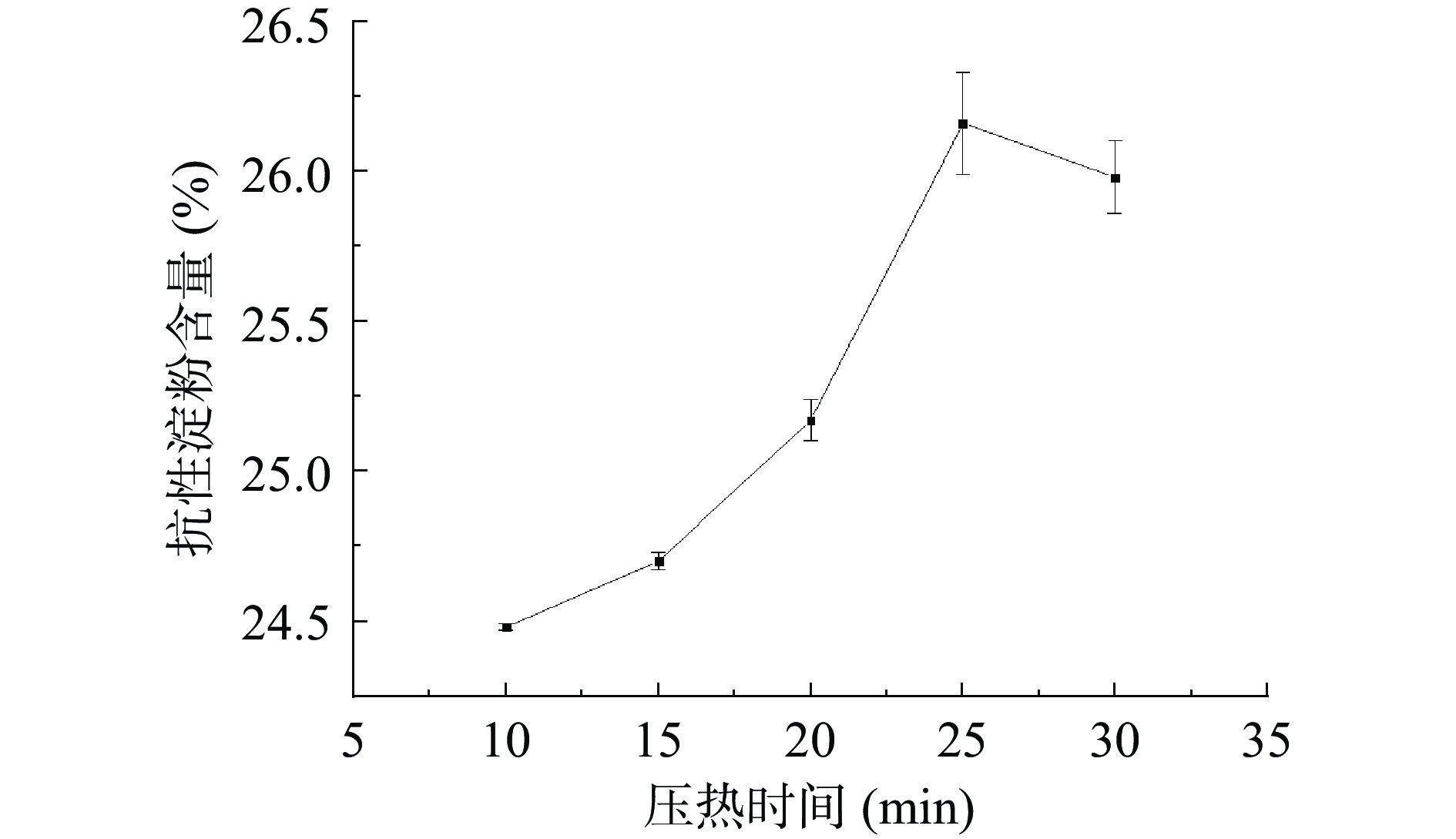
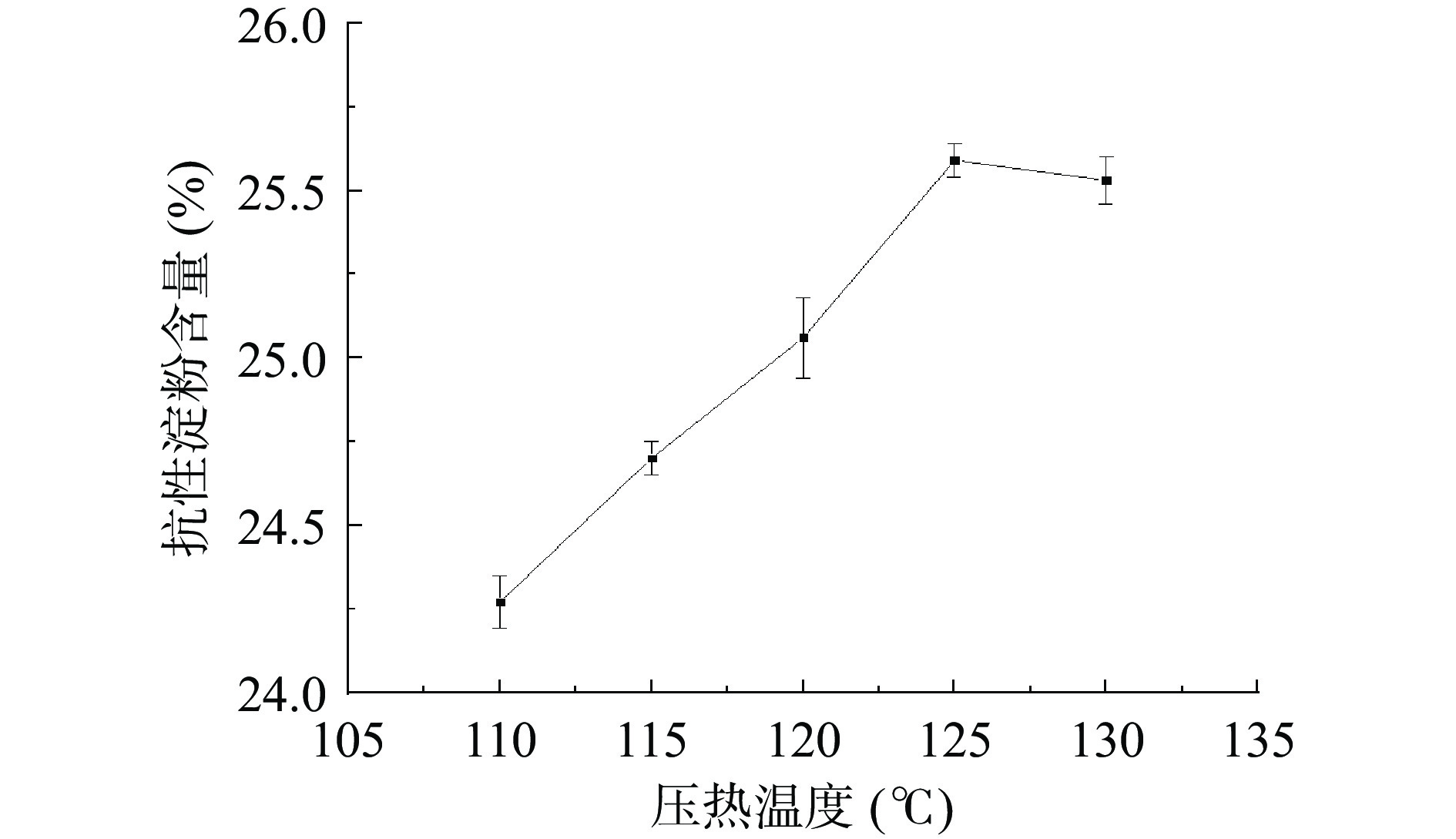
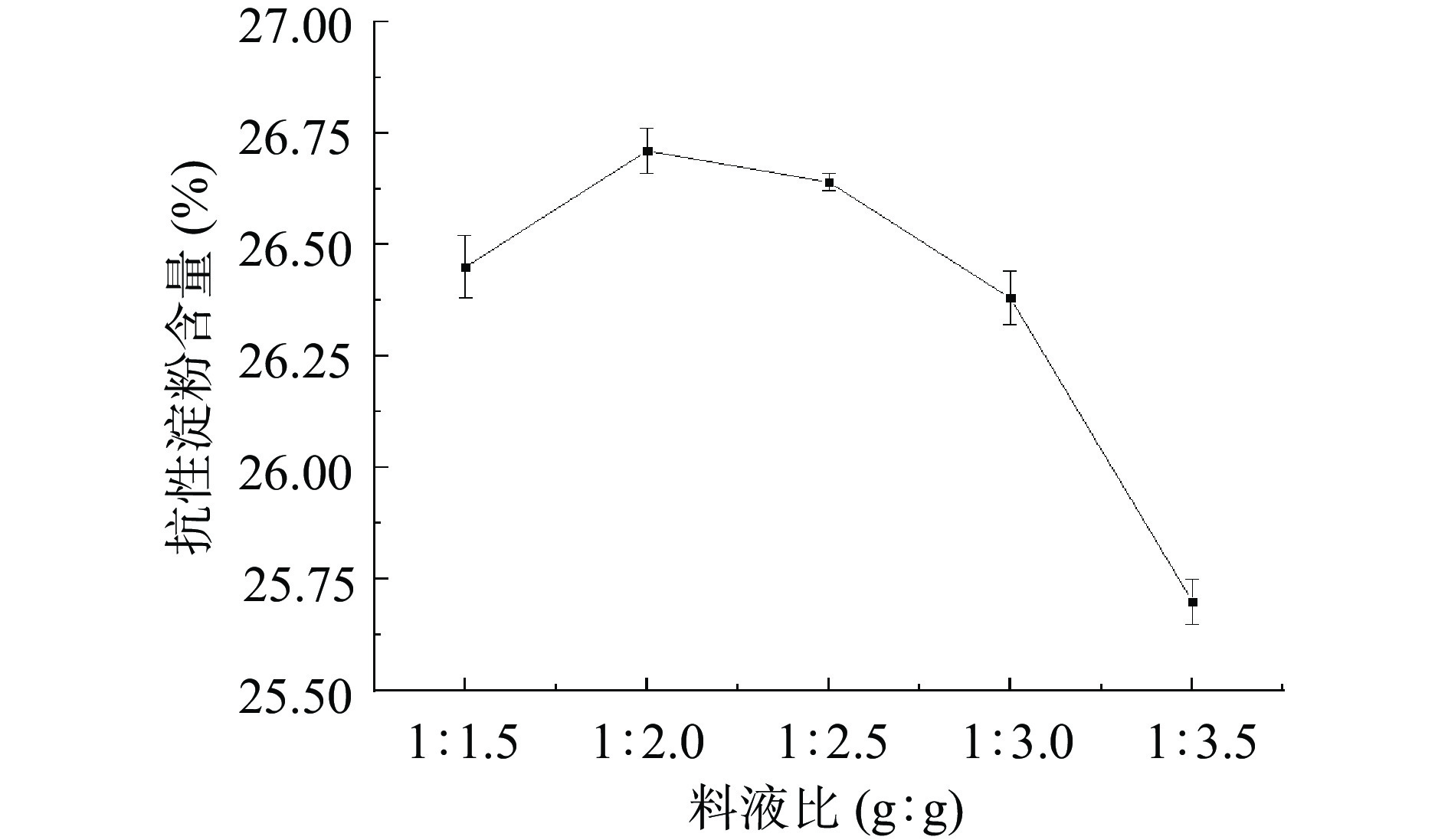
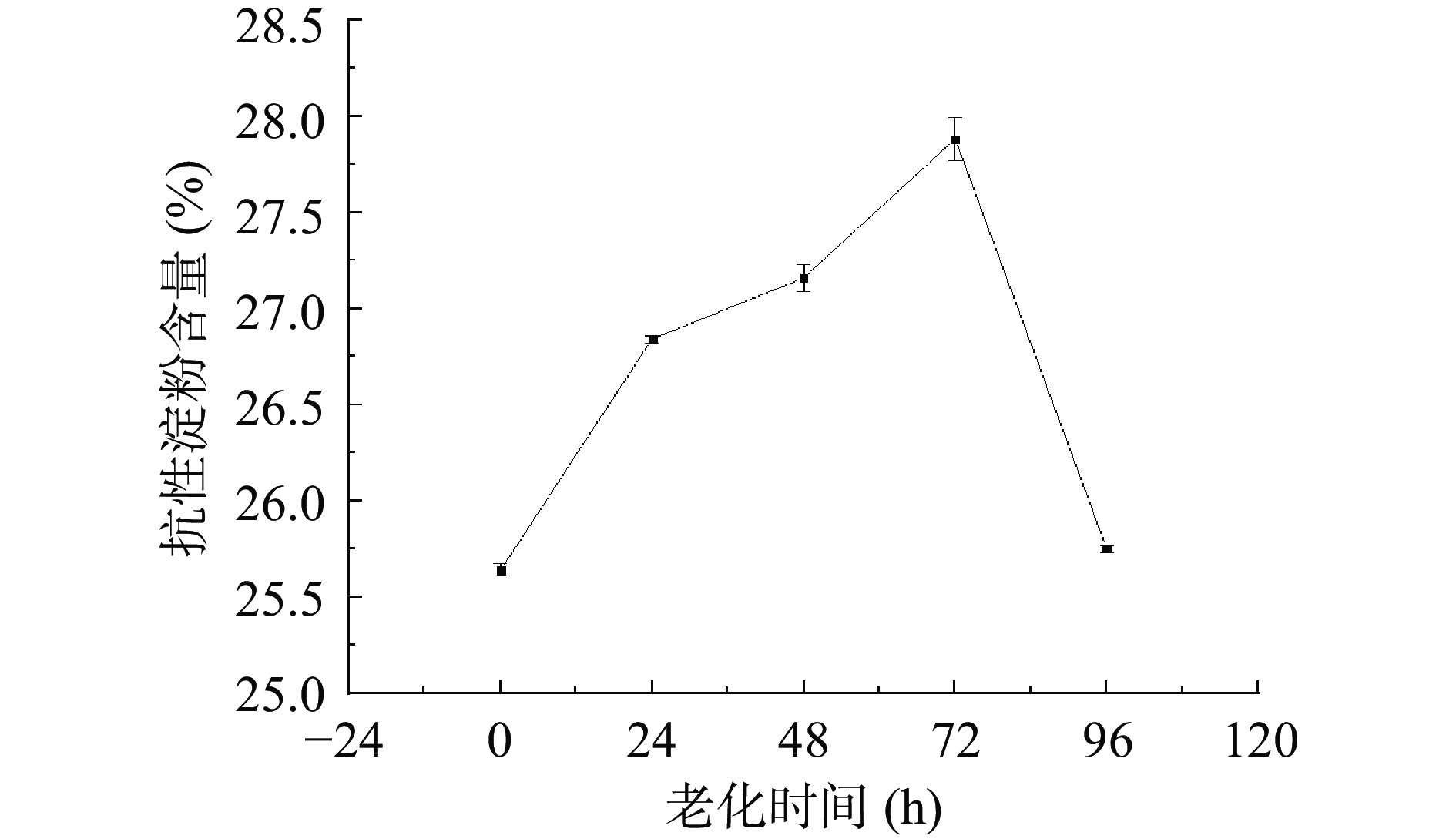
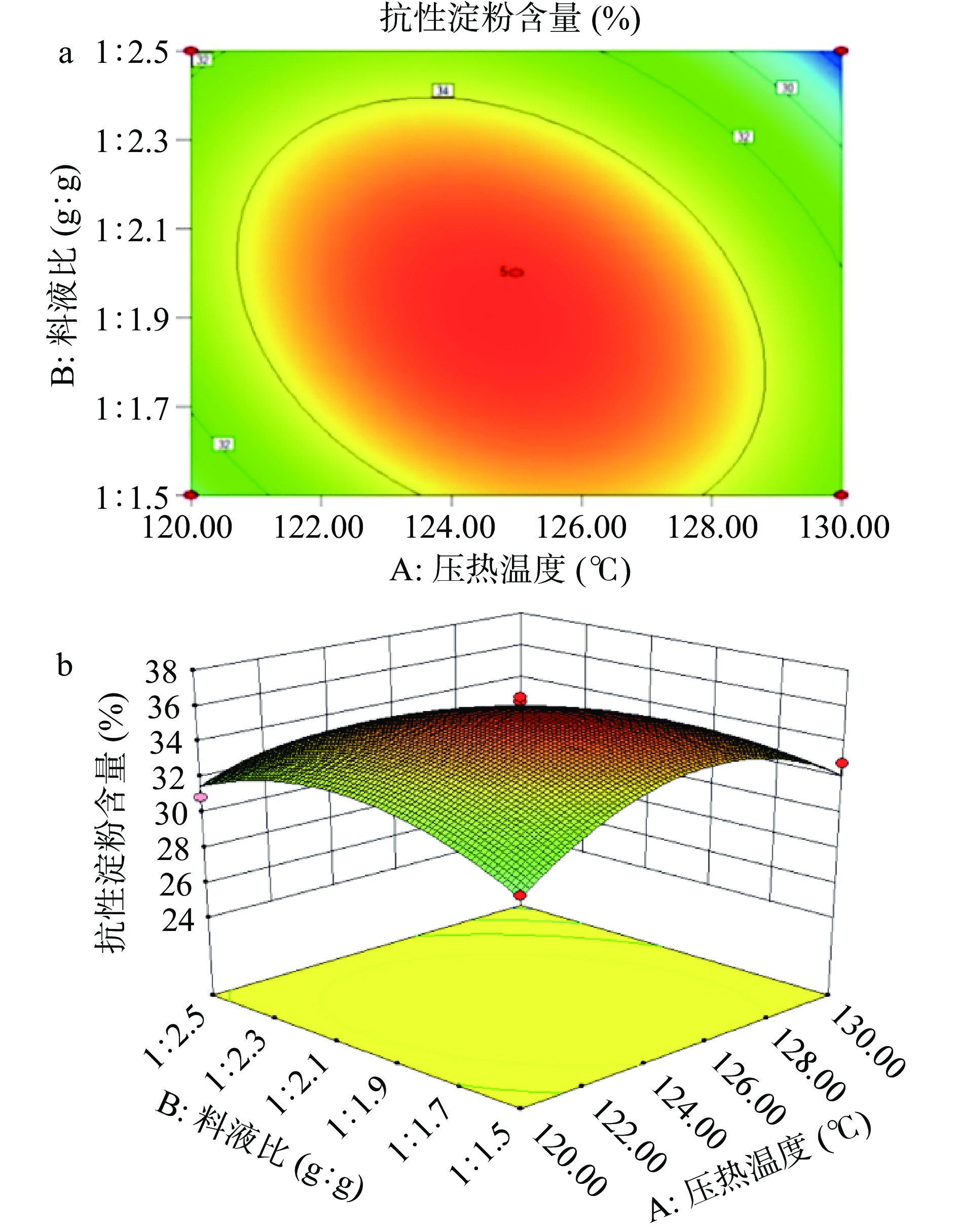
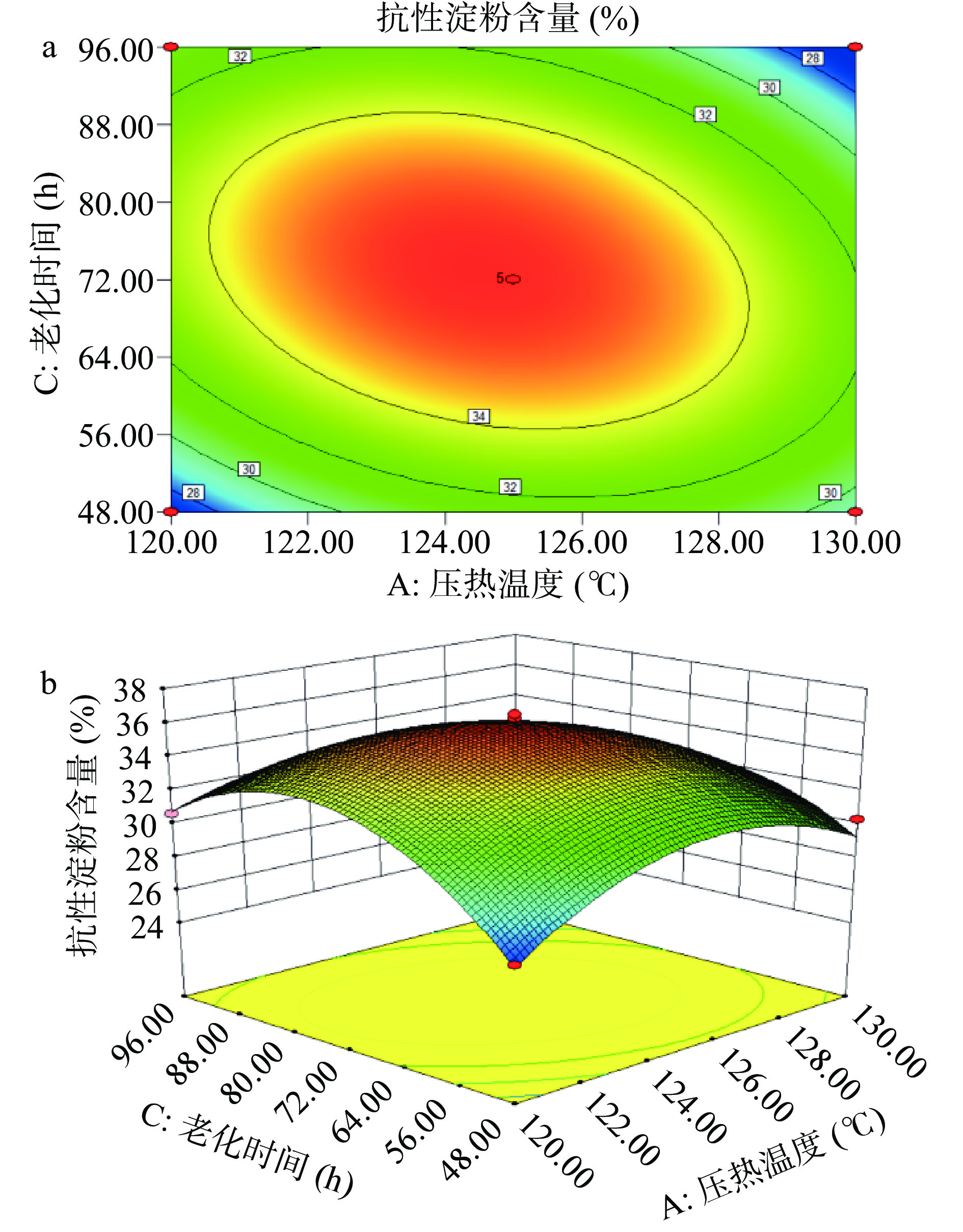
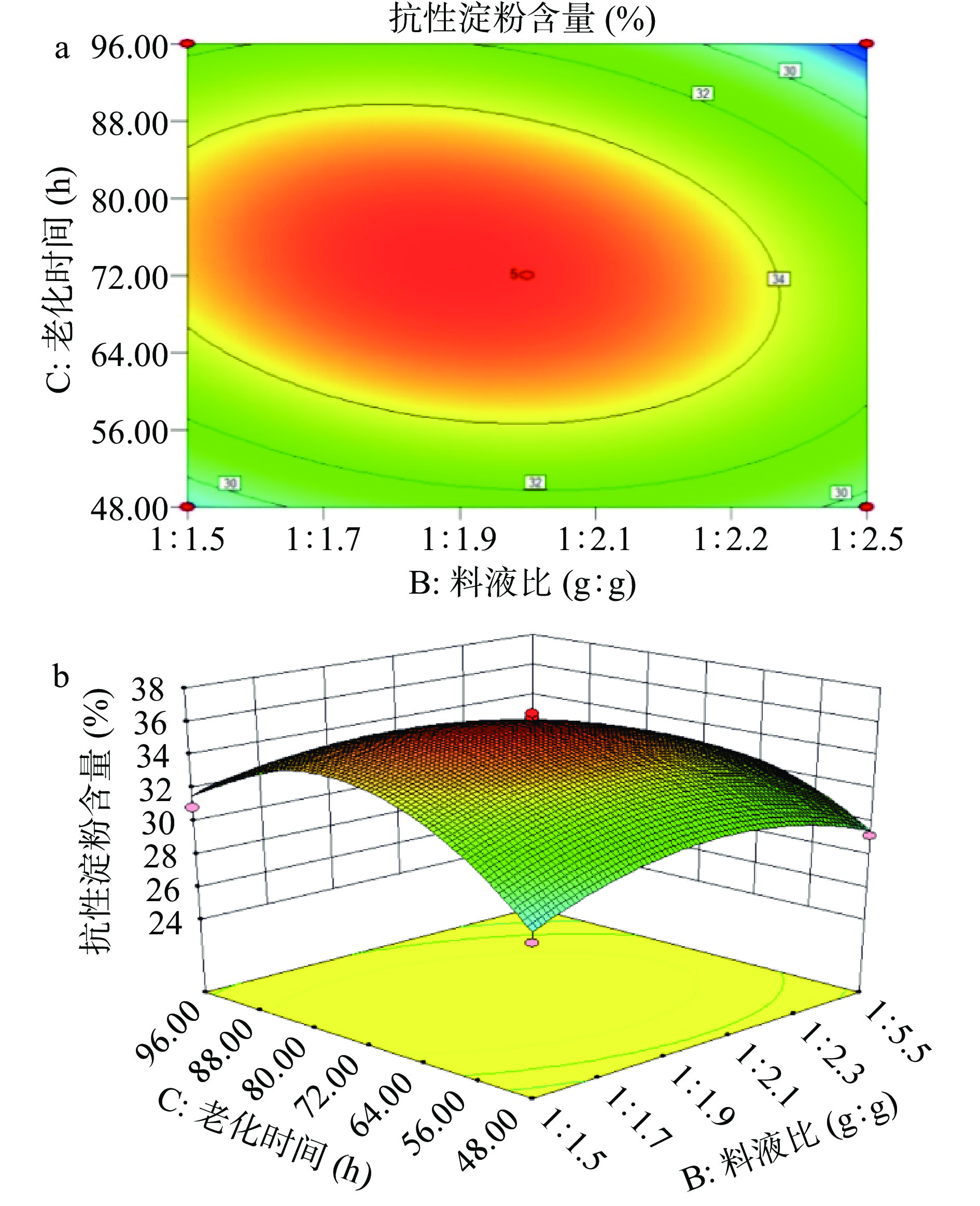
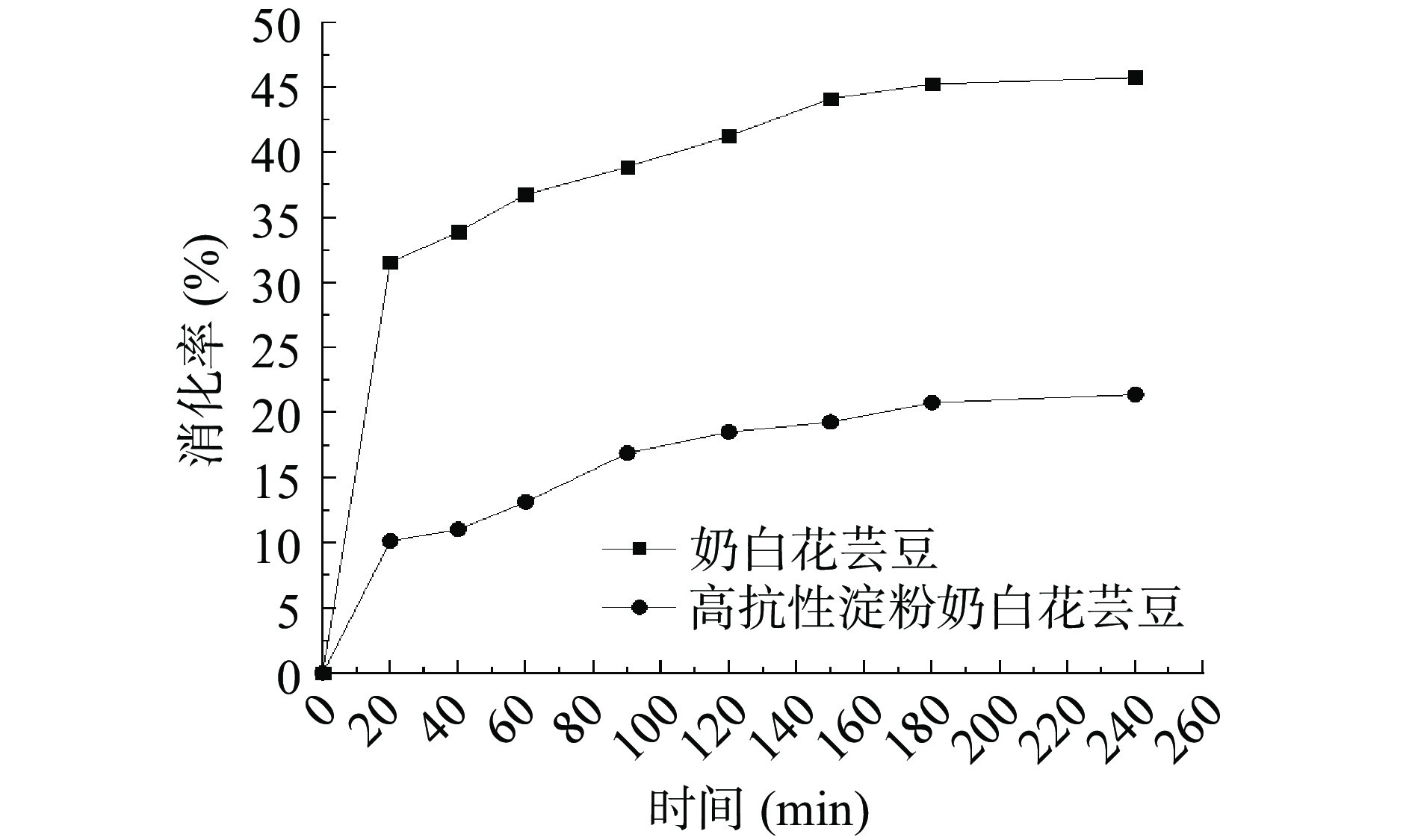
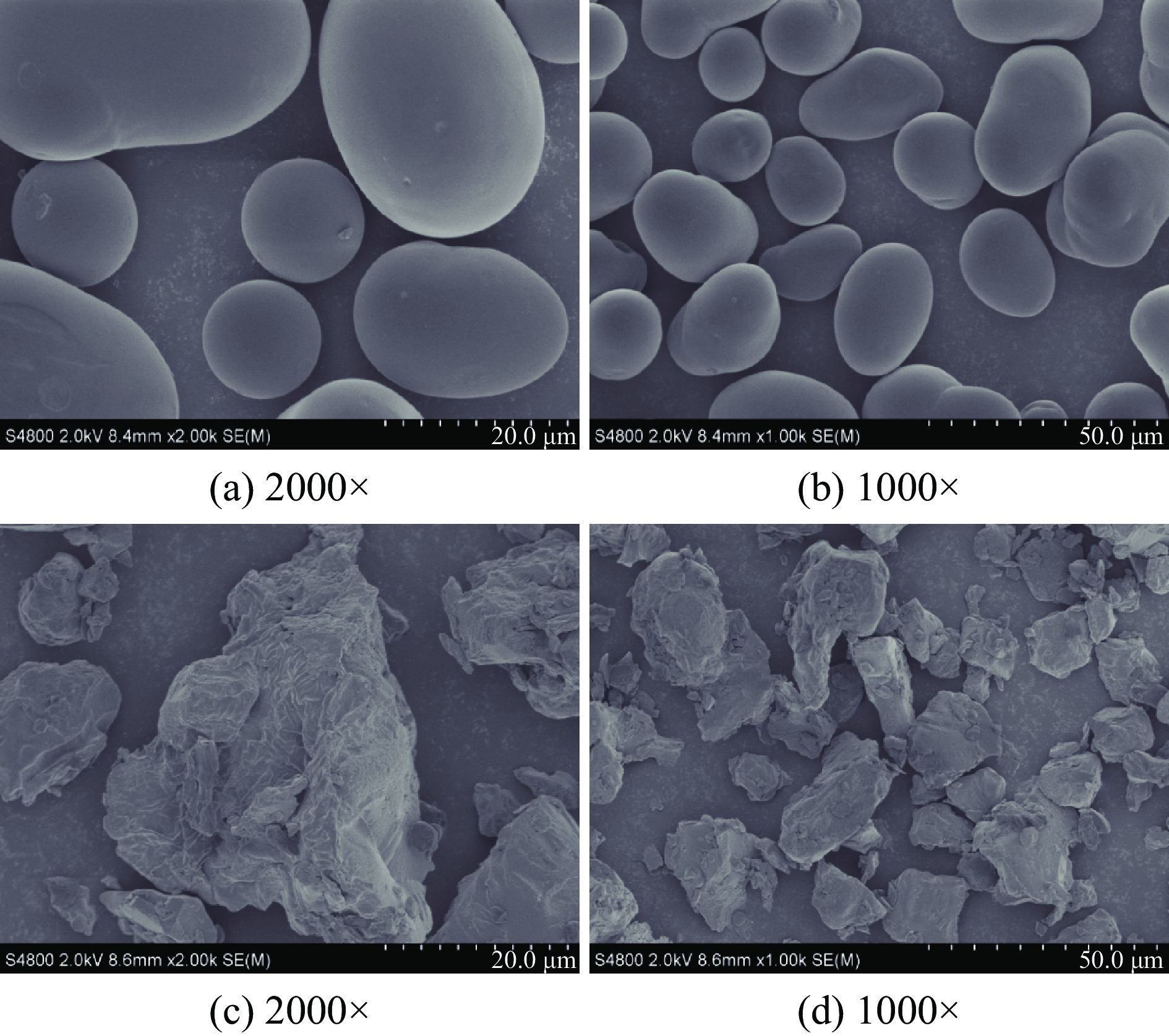
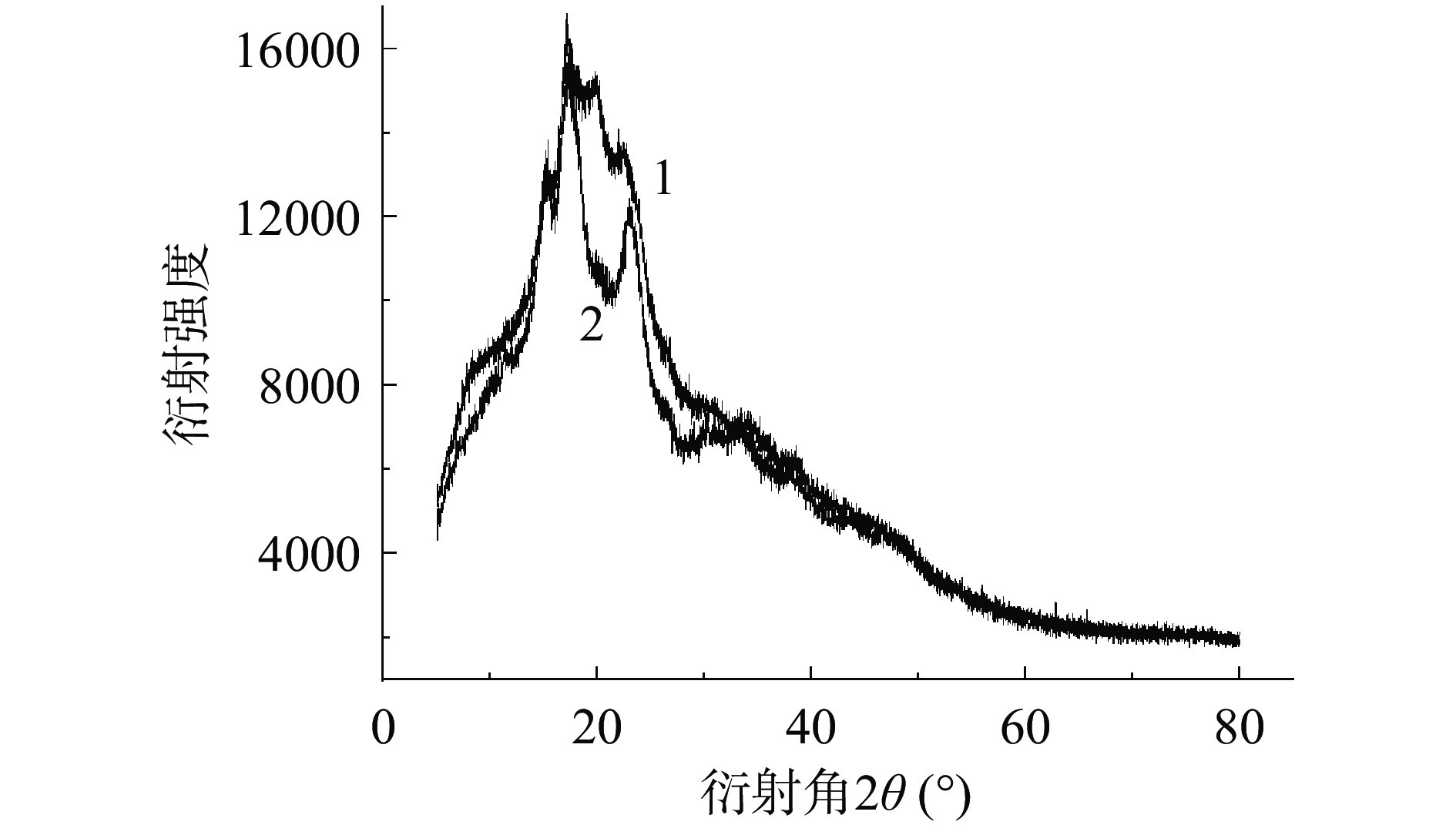
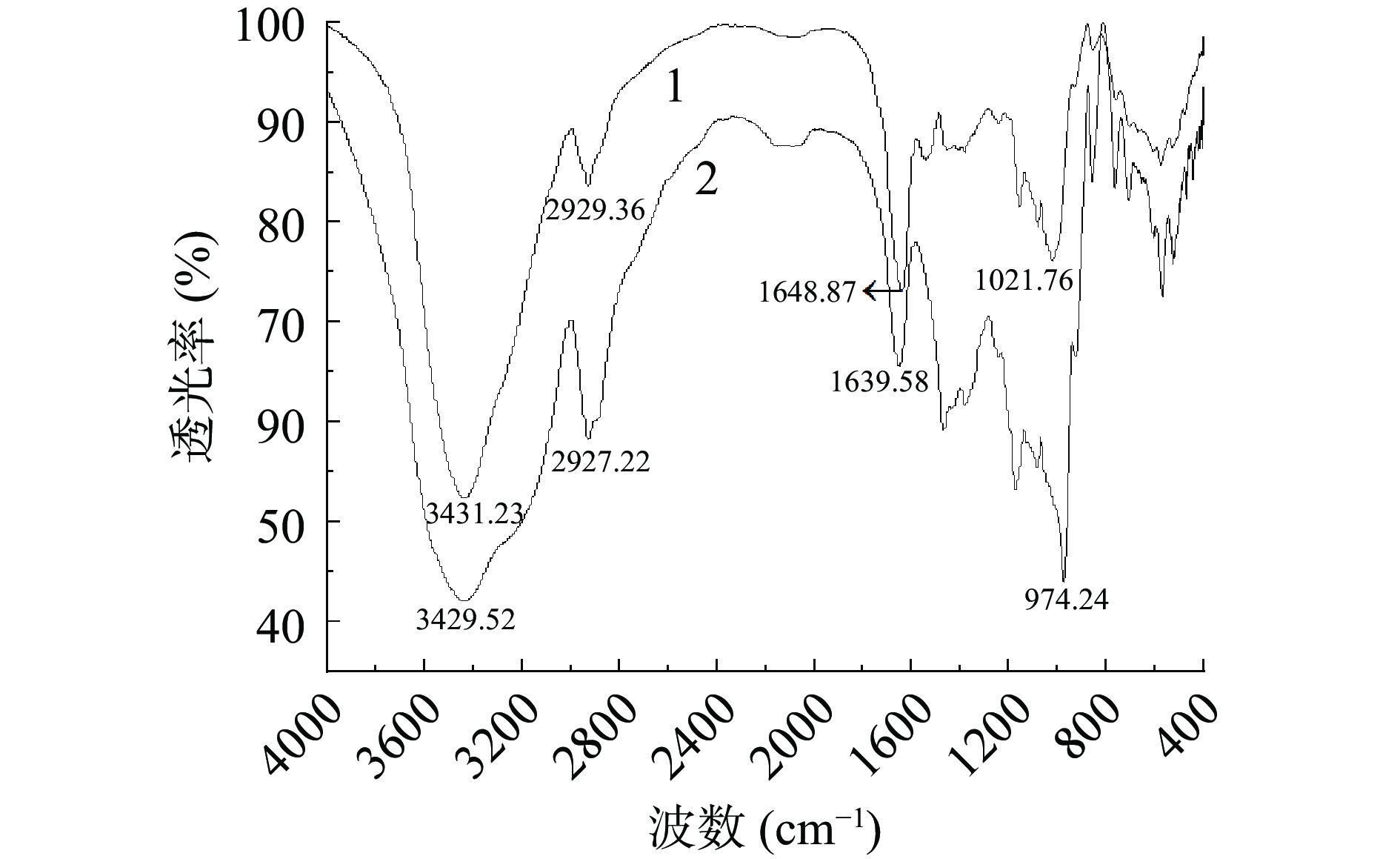
 下载:
下载:



